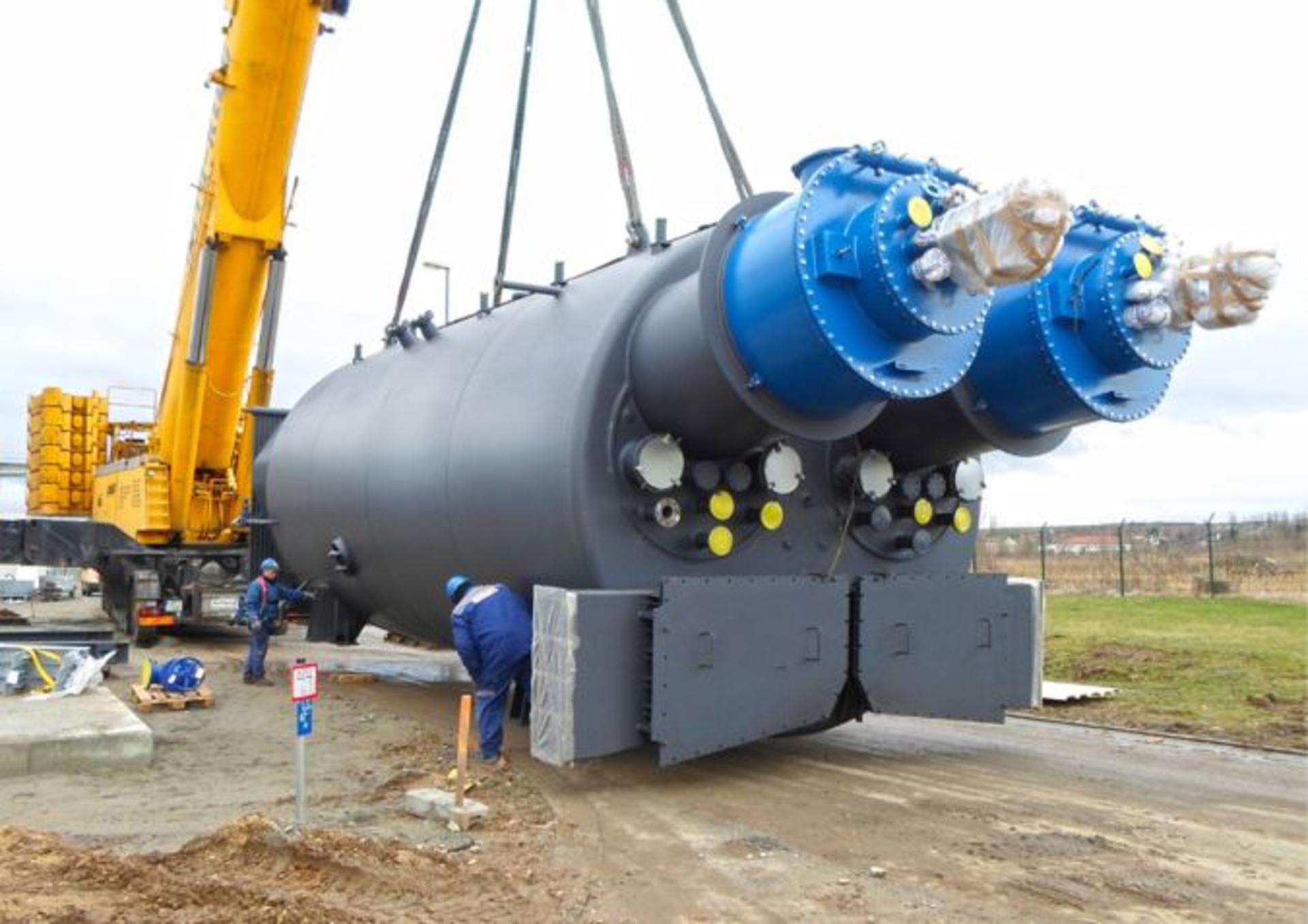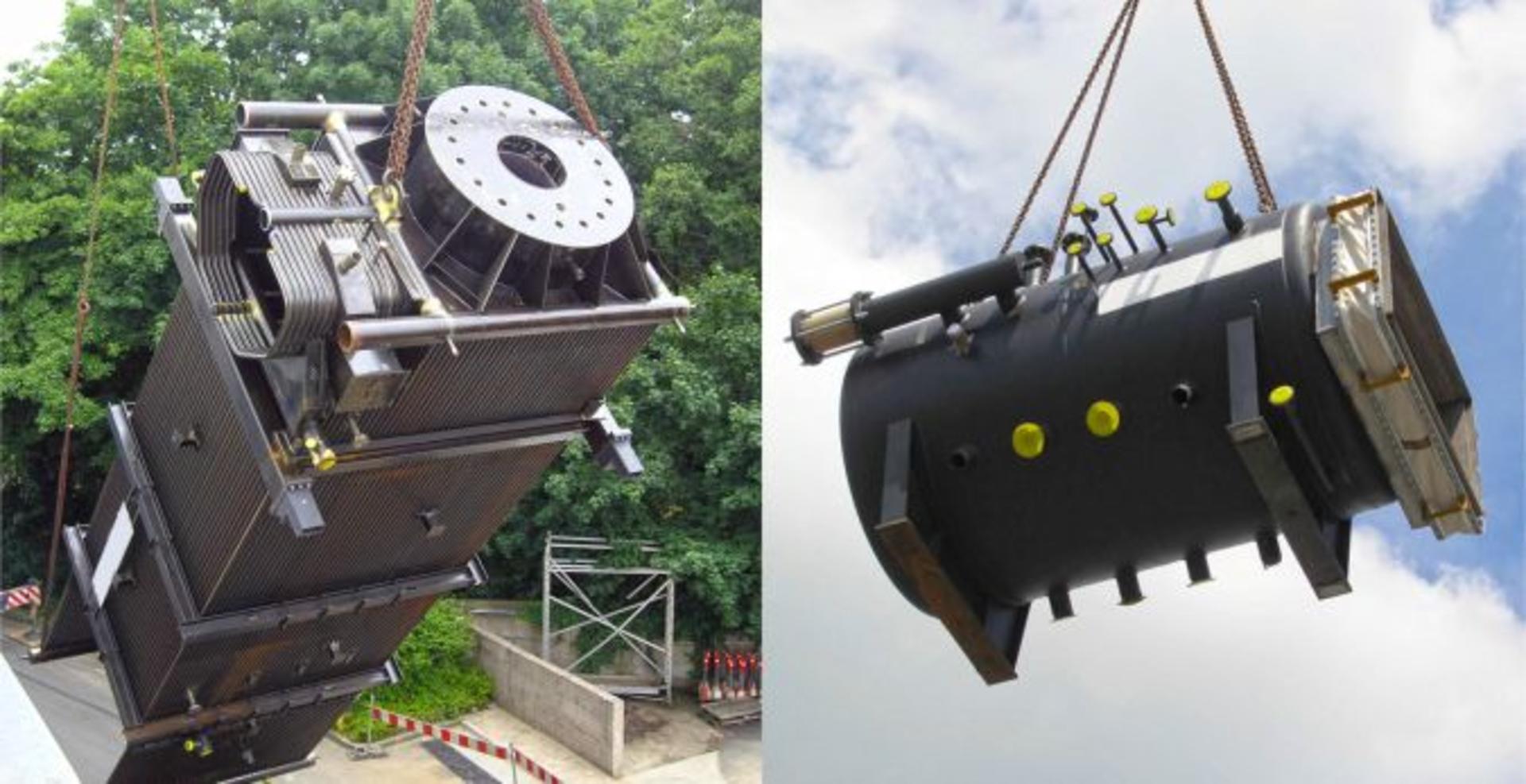STEAM DELIVERY:
SAFE AND EFFICIENT
Steam supply as a cost-effective and efficient solution for your company
Steam supply is a cost-effective and efficient way to provide power and heat to industrial companies. A number of steam boiler designs can be used depending on the area of application, the necessary steam output, steam pressure as well as steam temperature and the type of fuel used. GETEC has many years of expertise in the field of steam supply.
Together we will find the energy solution that is right for you.

Steam, in addition to electricity, is an excellent medium for efficiently transporting energy from where it is generated in a steam boiler to where it is used – the steam consumer. The steam consumer’s task is to indirectly provide heat for thermal processes using heat exchangers - also known as heat transmitters.
Heat exchangers transfer heat from the steam to the medium to be heated through a partition wall. If necessary, it is also possible to feed steam directly into the product without using a heat exchanger so that the heat from the steam can be absorbed into the product.
Steam can also be used effectively perform mechanical activity which in turn can generate electricity, for example.
Steam is the medium at the heart of the industrial revolution when the steam engine was invented. James Watt is considered the inventor of the steam engine in 1769 but Thomas Newcomen built the first functional steam engine to pump water out of a mine in 1712.
With the use of:
- Steam engines
- Steam locomotives and
- Steam turbines
it was possible to convert heat into mechanical energy, replacing human and animal muscle power and enabling previously unimagined levels of productivity.
Even today, steam, when it is under high pressure, plays an important role in supplying heat for industrial applications. But why is that the case? The generation of steam is technically quite simple and occurs in steam boiler plants. The only working material required is water – which is available everywhere. Steam has a particularly high energy density because it changes from the gas to the liquid state as a result of energy withdrawal, releasing its heat of vaporization or enthalpy of vaporization. This process is known as condensation.
Heating water from 0°C to 100°C requires only about 10% of the energy needed to then vaporize that water at 100°C. This amount of energy required for vaporization is called the enthalpy of vaporization, and it is this energy that becomes usable again when steam condenses.
This means that a relatively small amount of steam needs to be generated and transported in order to transport relatively large amounts of energy. The ratio of cost and benefit is very favorable. The steam absorbs its energy when heat continues to be supplied to the water above its boiling temperature, which depends on the pressure, and releases this energy during the condensation process - when steam becomes water (condensate) again through energy extraction.
During the condensation of 1 t of steam, approx. 700 kWh of usable heat is released and approx. 1m³ of condensate is returned to the steam boiler. If, on the other hand, the same amount of heat is provided by heating water in a heat exchanger, roughly 31 m³ of water must be pumped to the heat exchanger and back to the heat generator (assuming a temperature difference of 20 K, e.g. flow temperature 90°C, return temperature 70°C). This means that steam is the more suitable medium for supplying heat, especially for large heat outputs.
Steam can be provided at higher temperatures than hot water, which is another advantage because some steam consumers require higher temperatures. Very high heat transfer coefficients are achieved during condensation, meaning that relatively small and thus cost-effective heat transfer surfaces can be used.
Steam boilers - also referred to as steam generators - of various designs are used to supply steam.
Various steam boiler designs are used, depending on:
- area of application
- steam output required
- steam pressure needed
- steam temperature
- fuel used
If a steam pressure of about 30 bar is sufficient for standard applications in the industrial sector, shell boilers or smoke tube boilers are ideal due to cost considerations. For higher steam pressures and very high steam output, water tube boilers are used. Gas, liquid and solid fossil fuels are used as fuel, including:
- natural gas
- liquid gas
- heating oil
- lignite or hard coal
- lignite dust
Regenerative fuels such as wood, HTC coal, biogas, straw as well as energy crops can also be used in the steam boiler.
GETEC has more than 20 years of experience in supplying its customers with steam and electricity generated from various fuels. GETEC builds plants in accordance with its own planning and approval and has a wealth of experience not only in the construction, but also in the operation and service of several hundred plants built. Companies that decide in favor of GETEC benefit from this expertise.
We embody partnership –
find your contact.
With more than 70 locations throughout Europe, we are always at your doorstep.
Contact us. We are here for you.

